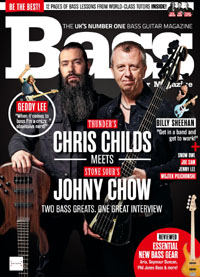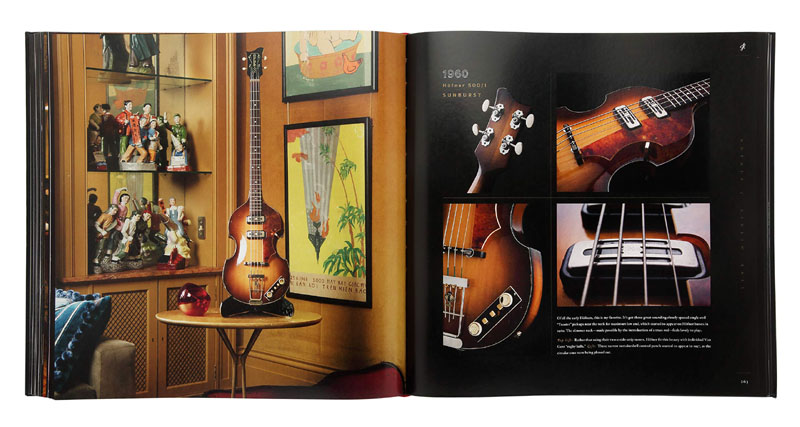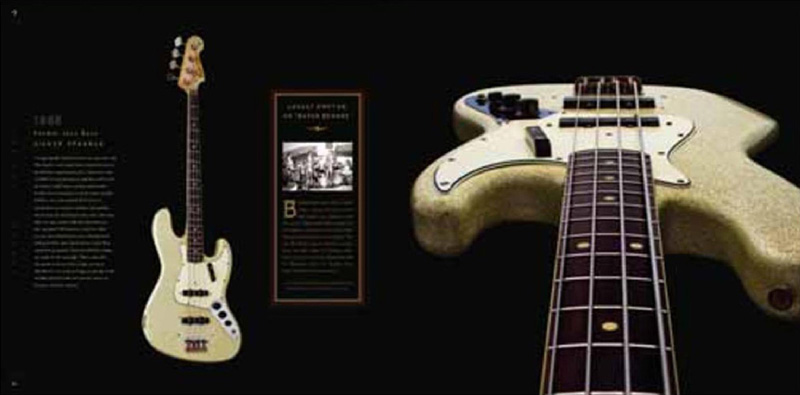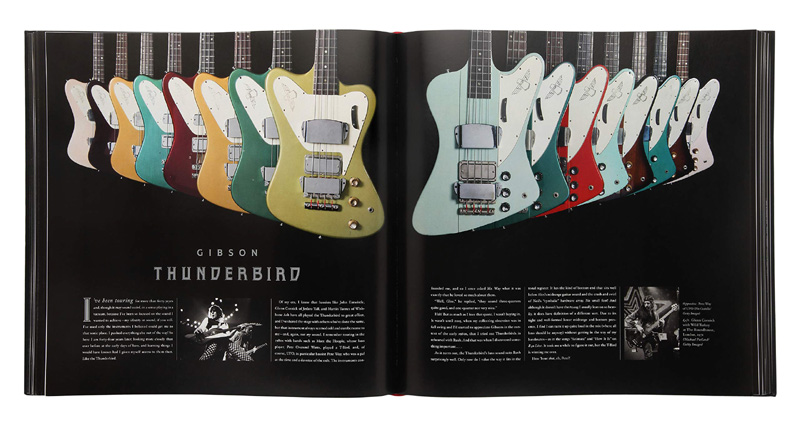Geddy Reader
By Ellen O'Reilly, Bass Guitar, Issue #166/March 2019

It's a cold rainy day in London as I make my way through the crowded streets into one of the swankiest hotels in Kensington. A top-hatted usher takes my coat and umbrella in the foyer, making me feel like a princess - which is only appropriate as I'm here to meet rock royalty!
When Geddy Lee is shown over to our table, he's exactly as I hoped he would be; pleasant, calm, well-mannered and undeniably Canadian. He's wearing a T-shirt, jeans and plaid shirt combo, combined with John Lennon-esque glasses which he peers over when making a point. My internal Rush fangirl is jumping for joy, but he's not here to talk about the legendary trio, he's here to talk bass. As if he wasn't enough of a connoisseur on the subject, publisher Harper Collins have recently unleashed Geddy Lee's Big Beautiful Book Of Bass on the world, and we're here for the low-down on this epic volume, available now for around the 50 quid mark.
Asked how this huge tome came into being, Lee explains: "The book started as an idea about three years ago, but it's been just under two years of solid effort to get it done. I have a pal, Daniel Richler, who lives here in the UK, and he kept saying 'You should do a book' so I decided 'You know what, there's stories to tell, there's things to talk about'. When you have as many instruments as I do, and you've been so obsessed with their histories and their minutiae that you have to put the details somewhere, I thought the best place to put them is in a book. So I said, 'Well Dan, you're gonna help me then' and he was the guy I sat down and argued over each word with. He helped me find my voice."
Sipping his tea, the great man continues: "Dan was a good writing partner, and the photographer Richard Sibbald basically moved into my house and set up a photo booth on the third floor. My wife very generously gave up her art studio to accommodate what she thought would be a month or two of shooting, which then turned into about a year. We ended up with about 30,000 photographs to edit down to about a thousand. The book features 250 basses from my collection, but since we went to press I've acquired a few other beauties - so version two will have to take care of those."

Has Geddy always collected basses, I ask? "No - for most of my career I just focused on the tools I needed to get my sound. My instruments were originally only things that I felt would help me develop my sound, where my ear was at, and where the band's sound was at. I didn't really pay attention to collecting those things, and it really wasn't until 2013 or '14 that I started really getting the bug. What happened was, a fellow approached me to do a swap. He said, 'I've got some of these mid-50s Fender P-Basses' - you know, the kind that Sting plays - and he said 'Would you be interested in exchanging one for one of your stage instruments?' I said, 'Well, I'm not trading my stage instruments, but I would like a P-Bass from my birth year, 1953'. You know, when you're a wine collector, you always look for wines from your birth year - so why not have a bass from my birth year, especially since it was so close to the beginning of bass guitar history?"
He goes on: "When I started looking into them I started getting really curious, and as I say in my book, when I get curious it's a dangerous thing, because suddenly I wanted to know all about Leo Fender and the early years of the Fender company. I decided that maybe I should get an iconic bass like the ones that my heroes played when I was young, like a Gibson EB3 to represent Jack Bruce, and so on. So I started looking for them - and then I got the bug, and every time one arrived I was thrilled to plug it in, and of course it introduced me to a lot of instruments that were outside my tonal range. And that was fascinating for me, because there I was, a musician playing for 42 years who had never plugged in an EB3! You know, how ridiculous is that?"

On the topic of mass production, I wonder if Geddy includes any basses from independent luthiers in his book. He nods: "There's a couple, such as the basses I have from Tony Zemaitis, who made them in the late 70s through to the 90s. They're pretty rare, so it was a lot of fun trying to track those down. The first one I bought from Bob Daisley; it was great talking to Bob about that. I interviewed him for my book and I went to Sydney to hang out with him. Then there was a Canadian luthier named Dino who was a friend of my tech [John 'Skully' Macintosh], and his is the only acoustic bass guitar that's in the book. So yeah, there's a few of those custom instruments."
Although Lee has been playing his signature Fender Jazz for two decades and counting, he'll always be associated with Rickenbackers for many Rush fans - and of course there are plenty of Rickys in his book. He explains: "I started in the earliest days playing a 1968 Fender Precision, which got me through the bars to the point where I was touring, and when I got my first advance I had to have a Rickenbacker just like Chris Squire. He played a '64 4001S and that was beyond my price range at that point, so I was just happy with a '73 4000. That was my main bass until 1977 when I got another one, because the '73 was getting pretty beat up. I stayed with Rickys for years and years.

"If you look at the early history of Rickenbacker basses, they made so few every year that they were almost like custom-made instruments. I go to great lengths in the book to talk about that, because I have three Rickenbacker 4000s from 1961. You can see that even though one of them is only four serial numbers away from the other one, they are vastly different. Not so much tonally, but structurally - the thickness is different, the shape and the tilt of the neck is different, the way the headstock is made is different. You can see that they were figuring it out, and I find that really fascinating. The bass that eventually became my number one bass, the two-pickup version of the 4001, had very humble beginnings. In those early days they were making so few that even though they weren't luthier instruments, they kinda were."
So what's the mission of the book? "Well, a lot of things come into play when you look at it," muses Geddy. "I'm really fond of midcentury Italian basses, because they're so beautiful and their details are so extravagant that a lot of the big three American producers wouldn't have taken the time to do those kinds of details. Now they don't sound like the big three, but they have a profound and lasting tone, and when you look at them - especially with a view to photographing them - they're pieces of art. That was a huge thrill for me, to discover them and to show the details that have come and gone, but it became a window to a lot of different things. Who knew that these companies actually made their bones as accordion manufacturers? That explains some of the details on the instruments - the push buttons and the sparkle. It was really fun. I know this all sounds like I'm a crazy, obsessive nerd - but that's what I am!"